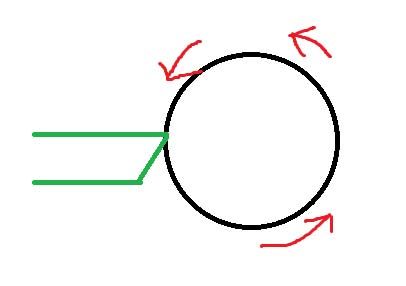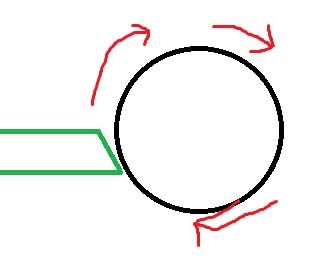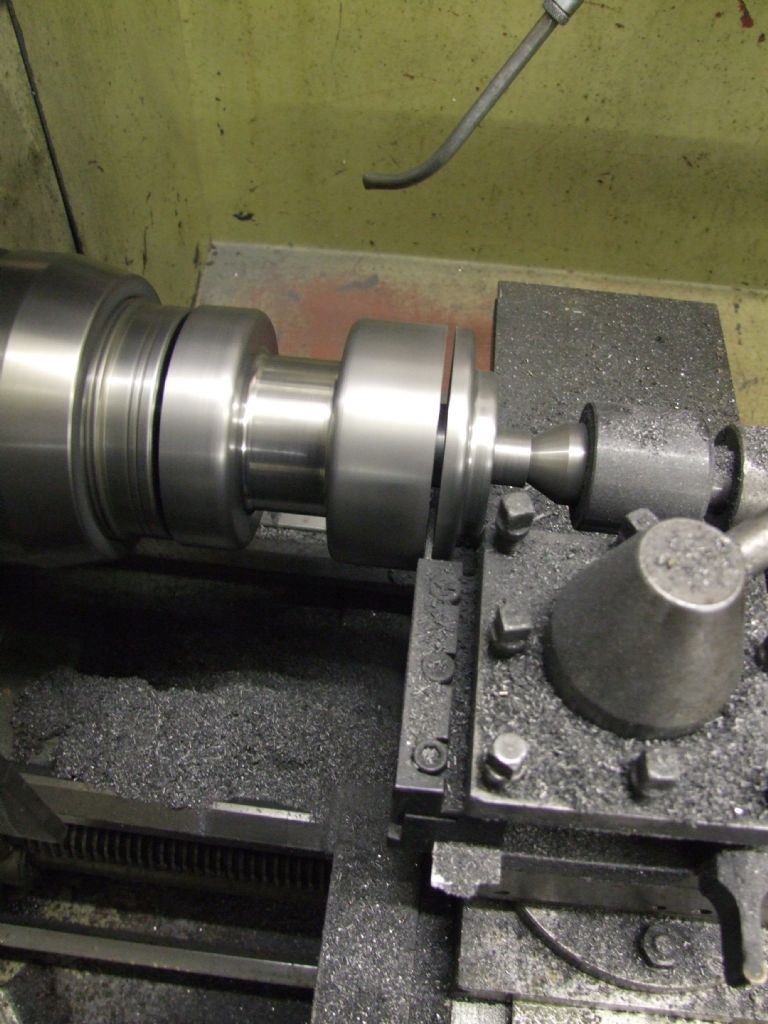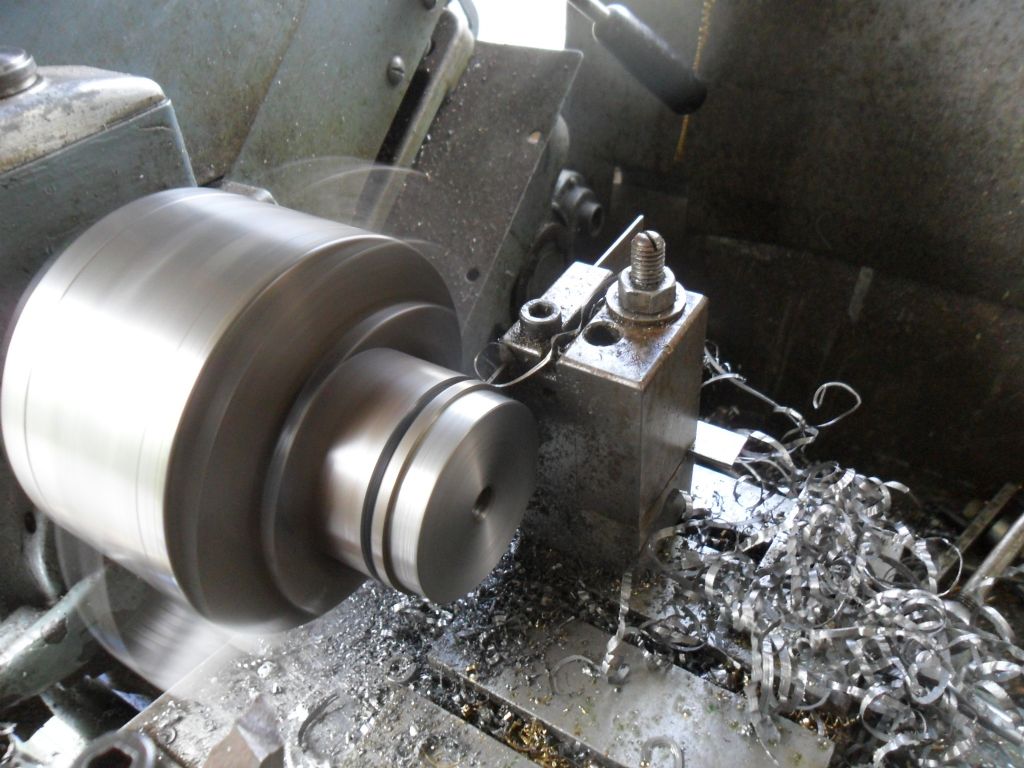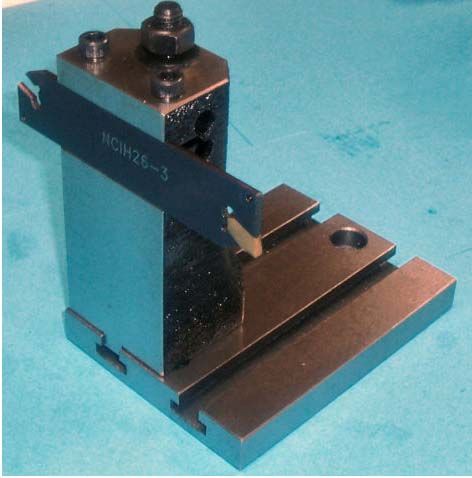
David,
The above type of rear parting tool holder works well. The one in the pic. is from RDG (no connection),around £60, but there are many types out there. The blade takes GTN3 inserts. These curl the chip in from both sides so making it narrower than the groove being cut and helps prevent jams. Parting becomes a routine operation with this kind of setup. (And you'll notice a big saving on washing powder )
)
Use plenty cutting oil. Keep both sides of the cut wet. Provided you have plenty oil in the cut, I have found no difficulty in stopping the cut by backing off very slightly, if there is a need to brush away swarf that might build up and get drawn back into the cut. Spindle speeds up to about 250 rpms work ok, with a steady continuous feed into the cut. I prefer around 100rpm. As you come nearer the centre ease off the feed pressure BUT do keep it cutting, not rubbing.
Also, be positive when beginning the cut. It can sometimes take a good pressure to get the cutter to "bite".
Take any slop there might be out of gib strips and if you can, lock the apron down on the bed while parting off.
Make very sure the cutting tip is sharp and has no tiny chips out of it.
J
 Vic.
Vic.

